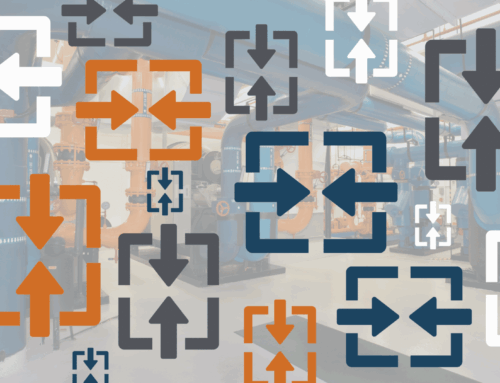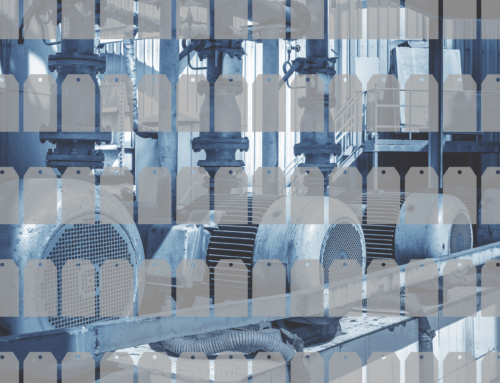Welcome back! Here is the second part of our ABCs of predictive maintenance. Share your ABCs on our LinkedIn page!
Non-Productive Time:
A plant needs to be in operation to generate output. This output, whether it is electricity, water, or materials, represents an organization’s revenue. A simple way in theory (though sometimes difficult in practice) to increase revenue is to decrease a plant’s non-productive time. When equipment is not running, it is not making revenue. And equipment cannot run when it has failed. This is where predictive maintenance process comes into play. By intervening early and ensuring your equipment does not reach the failure, you can help your organization minimize its non-productive time.
Overtime:
One aspect of maintenance costs are your people. How long does it take to fix an issue? How quickly does it need to be solved? Do you need to call in specialists? When there is unplanned downtime or equipment failure, you lose time to plan and prepare. The question then becomes, how do we fix it? Not, how do we optimally fix it? This opens the door for overtime, potentially leading to overworked members. By having time to plan, you can eliminate unneeded extra work. And you will reduce time spent identifying the issue, instead giving you more time to focus on how to solve the issue.
Asset Performance Management:
Predictive maintenance relates to Asset Performance Management (APM). According to Gartner, APM “encompasses the capabilities of data capture, integration, visualization and analytics tied together for the explicit purpose of improving the reliability and availability of physical assets. APM includes the concepts of condition monitoring, predictive forecasting and reliability-centered maintenance (RCM).” The goal of APM is to improve an organization’s decision-making process. With more and better information from a PdM tool, users can reduce unplanned maintenance, minimize costs, and improve asset availability.
Quality:
When using data to inform your decisions and actions, you need to ensure access to quality data for PdM. If the data does not reflect the true operations of the equipment, what is the point? For example, is the sensor measuring what we expect? And furthermore, is it measuring accurately? To help ensure data quality, make sure you have a standard sensor naming and description convention. The next step is to use a tool like a data historian to help monitor data quality. An added bonus of predictive maintenance tools is that it can provide robust sensor review and pinpoint sensor issues, including calibration issues.
Real-Time Analysis:
Real-time analysis does not mean reactionary analysis. When evaluating a plant’s or piece of equipment’s status, you want the latest data. Not from an hour or day ago. In addition, predictive maintenance tools will not be overwhelmed by data. The software does not need sleep, it can continuously run, crunching the numbers. This continuous ability to do real-time analysis across your fleet, plant, and equipment lets you focus on the problem areas, and prioritize what needs your attention.
(Maintenance) Strategy:
The predictive maintenance process does not replace your current maintenance strategy, but rather augments and improves it. For example, there will still be regulatory and compliance requirements that will require preventative maintenance activities. There will also be times when you and the rest of your team may be in a reactionary mode. As a result, create a robust maintenance strategy in which PdM reduces your risk of unplanned downtime and reactive measures, while also clearly laying out how deal with an issue when it does arise.
Training:
For PdM solutions, training has multiple meanings. The first is how the PdM solution must be trained to understand your plant and environment using your data. The second is how users will require training to leverage PdM solutions. This does not mean that PdM solutions are difficult to use or learn. Instead, it points to the fact that the digital transformation requires intentionality as well as continued training and learning. It is also an opportunity to incorporate all layers of your organization’s knowledge, expertise, and recommendations.
Unscheduled Downtime:
In any plant, regardless of size or location, downtime will happen. The issue arises when it does not happen on your schedule, but on the failure’s schedule. The goal of the predictive maintenance process is to minimize unscheduled downtime. By identifying potential and hidden failures in advance, you will have more lead time to plan and prevent the functional failure. Thiskeeps your equipment and plant in operation, and your people safe. Not only can unscheduled downtime impact your bottom line, but it can put your people at risk. With a PdM tool, you can reduce risks and in turn reduce your stress from the unknowns.
Visualization:
When considering a PdM solution, evaluate the visualizations that come with the tool. For example, when analyzing a potential issue, having a line chart of the real-time, historical, and expected values of a tag and related tags helps you quickly and easily identify a trend. A visualization makes this easier than just looking at the data itself. After verifying the availability of visualizations in the PdM solution, evaluate the ease of use of the visualizations. Are they as simple as drag-and-drop, or does it require additional development and engineering? In this case, built-in visualizations will help users leverage the PdM tool quickly and effectively.
Wow Support:
For a PdM tool to be effective in an organization, you need buy-in from your people. And you need buy-in from your software provider. With digital transformation, the relationship between user and software provider should be defined as a partnership. It is not a one-time deal. As such, discuss what the support will be going forward with your solution provider. How can your solution provider help you improve operations? And how as an end user can you serve as an extension of the solution R&D team? This wow support and partnership will set your organization up for success.
Operational Excellence:
Operational excellence includes systematic processes and culture. Both are necessary for an organization to achieve operational excellence. An organization will have to address both to truly take advantage of PdM. For processes, how will the tool fit into the day-to-day operations of the organization and users? Who is responsible for its management and usage? What process do you follow when a PdM solution identifies an anomaly? Related is culture. For your PdM process to be effective, it must start with your people. They need to see the value and benefit themselves in order to follow and internalize the process.
Yield:
Yield can relate to non-productive time and unscheduled downtime, but it also relates to the benefit of a PdM tool. What is the yield of your software solution? In other words, what is the return on investment? When evaluating the ROI, think about maintenance, consultant, inventory, and personnel costs. Also consider non-tangibles, including risk mitigation and safety improvements. Once you have implemented a solution, keep track of the catches and results of the early warnings to evaluate the effectiveness of the PdM tool for future development and investments.
Zero In:
The ability for a PdM tool to continuously monitor all your equipment all the time will enable you and the rest of your team to zero in on the areas that need your attention. When prioritizing with a PdM tool, you will be able to focus on what is both important and urgent for your plant and equipment. This will let your subject matter experts leverage their knowledge on potential issues that need to be solved now, not later. This ability for root cause analysis will save you time, energy, and resources.edit button to change this text.
Let us know which letters resonated with you most, and if you learned any new terminology to share with your peers!
Get in contact with us today to learn how we help our customers improve their operational maintenance strategies and overall efficiency with our advanced predictive maintenance tool, HanPHI.






